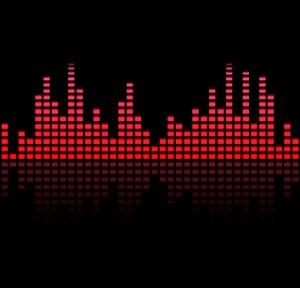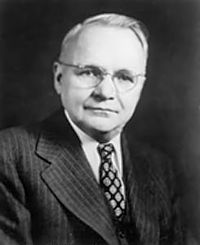“Sound Thinking” by Joe Lambert: What’s the Right Sample Rate?
In this series, Joe Lambert addresses the FAQs he fields as a mastering engineer.
Q: Joe, how do I know what sample rate I should be working at?
A: Most of us work in the digital world when making music to some degree. Many things play a role in the sound of songs we’re working on, and one of the first things to choose at the beginning of any project is the sample rate: the most common choices available today include (but are not limited to) 44.1kHz, 48K, 88.2kHz and 96kHz.
If you’re working in the audio-for-video/music-for-film realm, 48kHz is the standard, so I think it’s best to work at 48kHz from the beginning to avoid having to do any sample rate conversion later on. Those with old computers and hard drives, you’ll want to avoid the higher rates of 88.2 and 96 because they will just slow you down — if your computer is capable of handling them at all.
First Things First
Sample rate or sampling frequency is the number of samples per unit of time (usually seconds) taken from a continuous signal to make a discrete signal. What that means is for one second of 44.1kHz audio you get 44,100 individual samples, 48,000 samples per second for 48kHz and so forth.
44.1 was chosen because of a discovery by Harry Nyquist while working for Bell Labs on the concept behind digitizing sound. He found that when trying to have enough information to reconstruct the original waveform, the sampling rate must be at least twice the signal bandwidth. Our hearing range at best is between 20Hz and 20kHz. Therefore, the sampling frequency is chosen a little higher than 20kHz since the practical filters used to prevent aliasing have a finite slope (i.e. 44.1 is a little more than double 20kHz.)
As digital audio matured, high- resolution audio formats such as DVD-Audio and SACD were introduced in the late 90’s. They provided a variety of higher sampling rates: 88.2, 96, 176.4 and 192kHz. At about the same time the iPod was introduced and — as we all know now — while the audio world was trying to get more high-fidelity the consumer was actually more interested in portability, size, and MP3’s. This played a part in why DVD-Audio and SACD never became the industry standards that the industry hoped for.
The Bottom Line
OK, this info so far is pretty easy to find on many different audio websites. So the real conversation for us interested in making music is, “Which one should I use? What sounds best?”
Many search for that “analog sound” and many engineers have their own idea on the “best way” to achieve that while working in the digital world.
In my opinion if you want to get the warm “tape” type sound, the combination of 44.1kHz and 24bit are the closest sound I hear when listening back to mixes I get. One big reason for this is the anti-aliasing filters that are at the input and output of digital signal processing systems.
An anti aliasing filter is a filter added before the sampler and ADC. It attenuates the higher frequencies greater than the Nyquist frequency to prevent the aliasing components from being sampled. We can dive deeper into that in another article.)
If you want to go higher resolution you may want to start with 88.2kHz. This is becoming more and more popular with mix engineers. It sounds wonderful with extended, warm-sounding high end. Also, since we are converting it down to 44.1kHz for most of today’s listening devices the math makes the downsampling easier and doesn’t involve interpolation like 96kHz.
If you find 88.2kHz or 96kHz sounds best to you, will you still think that after it’s been sample rate-converted for CD and other digital release? Good question. I say, use the higher sample rate if you like it best — the end result, when converted properly, will retain the overall sound quality quite well.
Keep Your Commitments
When you have made your choice in sample rate (and bit depth) it’s important to stay there for the life of the project. Sample rate conversion is something to avoid — once you have tracked at a specific sample rate, keep your mixes at the same sample rate.
From there, make sure those mixes are what are used for the mastering session. There is no good reason to work at 44.1 then up-sample rate convert to 88.2 just to deliver for the mastering session — and you definitely do not want to work at 88.2kHz or 96kHz, and then master from a file that was converted to 44.1kHz. Let the mastering engineer do the conversion from the sample rate you produced your project at with a very high quality converter when needed. (Note that if you tracked at 16bit and want to increase your bit rate to 24bit for mixing, this is actually a good idea. It does no harm to the original file, and gives you the extra plugin and mix bus headroom.)
I’ve done many great-sounding records with all of these sample rates. Hopefully these observations, along with your personal prefererences, will help you to achieve the sound you and your clients are looking for.
Joe Lambert is owner and chief engineer of Joe Lambert Mastering (JLM) in Brooklyn, NY. To send Joe a question and visit JLM, go to http://www.joelambertmastering.com.
Please note: When you buy products through links on this page, we may earn an affiliate commission.









Ask Kæreby
November 22, 2011 at 8:09 am (13 years ago)To be picky, SACD uses a different digital audio format known as DSD (direct stream digital) as opposed to the PCM system used by CD and DVD. SACD uses 1-bit 2.8 MHz sampling, which is a different approach from, say 24b/192kHz, but still achieves higher resolution.
Joe
November 23, 2011 at 3:50 am (13 years ago)I don’t consider SACD to be part of the decision process in the vast majority of today’s recordings. To call it an option at all is a stretch. That’s not a criticism, because it’s a great sounding format.
As you mentioned Direct Stream Digital (DSD) and Pulse Code Modulation (PCM) audio are two completely different ways of processing audio. So if you are talking about sample rate options you’re talking about PCM audio.
Kaya Bailey
November 23, 2011 at 9:12 pm (13 years ago)I have to agree on the conversion rates. In most cases our work is centered around releases for CD, Video or their digital counter parts. Most DAW’s offer up conversion but the sound becomes higher pitched, increased file size, and does not accurately represent the source material. In the move from 16bit to 24 bit it is flawless, and it’s an absolute necessity to start works in the native resolution of that particular format. Places where this shift is not so obvious is during video editing, as the upsample rate from 44.1 material is usually seamless in NLE software like Final Cut, Premiere, Avid and Vegas. From what I’ve worked on thus far it really seems to be the size of the project often determines the need for higher sample rates – as is the case with 5.1 and DVD- Audio releases.